- Home
- Ramachandra Guha
Patriots & Partisans Page 5
Patriots & Partisans Read online
Page 5
Ramesh was merely doing his job, for which he was rewarded with a continual stream of abuse in sections of the English-language press. In October 2010 I spent some weeks doing research in New Delhi. I asked the boarding house I was staying in to send me a newspaper not printed in my home town, Bangalore. When I lived in Delhi, in the 1980s, this newspaper was known for the rigour of its grass-roots reportage and for the independence of its editorial views. It also had a strong tradition of environmental reporting. Now, however, it appeared that the same newspaper had become a sort of unofficial mouthpiece of the Confederation of Indian Industry.
In the short time I was in Delhi, this paper ran half a dozen stories vilifying Ramesh—stories that, unconsciously or consciously, revealed its own biases and interests. The Ambanis planned to build a new airport in Navi Mumbai, for which they were ready to destroy a large swathe of mangrove forests. Ramesh sensibly pointed out that with a slight realignment, involving the diversion of land from a SEZ owned already by Reliance, the forests could be saved. The paper, seeking to side with the promoters, approvingly quoted (of all people) the Maharashtra industries minister Narayan Rane to the effect that mangroves could be regrown anywhere and at any time.
(If this were indeed the case, Rane would get the world’s top award in ecological restoration.) Another story damned Ramesh as a ‘maverick minister’; yet another accused him of ‘cancel[ling] major projects with worrying whimsicality’.
The ideology of this newspaper was most evident in successive editorials it wrote on Arunachal Pradesh. After a visit to the state, Ramesh had raised questions about the hasty clearances given to large hydro-electric projects, built by private companies, that would displace tribal people and destroy priceless forests and biodiversity. He asked that public hearings be held, and local communities consulted before these projects were approved. The newspaper now ran an editorial accusing him of ‘gadding about looking for more fashionable causes to sponsor’. It claimed he wished to ‘destabilize an entire region’s development’.
A few days later, another editorial on the same subject demanded quick clearance of all schemes in the state. It claimed the ‘environment ministry has been careless and unwise in its approach to the various relatively small (sic) projects that have been planned for Arunachal in an attempt to increase the region’s prosperity and integration into the rest of the economy’. Warming to the theme, the editorial insinuated that by keeping Arunachal ‘backward’, Ramesh was merely playing into the hands of the Chinese.
In fact, it was the dams, rather than their stoppage, that threatened to destabilize the region. Of all states in the North-east, only Arunachal has not yet had an insurgency, in part because of sensible policies designed by the anthropologist Verrier Elwin in the 1950s and 1960s, which protected tribal rights in land and forests and kept missionaries (of all faiths) out of the state. Ramesh’s own proposals made sound economic, social and political sense. The dams would largely benefit cities in the plains, while displacing local farmers, herders and fisherfolk. Besides, the Eastern Himalaya have India’s richest reserves of biodiversity; they are also peculiarly earthquake-prone. Nature, as well as culture, mandated that proposals to build large dams be treated cautiously. Already there was growing popular discontent on the issue. Hence the suggestion that there be public hearings, so that the people of Arunachal, rather than some know-all editor in New Delhi, could decide what would best bring them ‘prosperity’ and ‘integration’.
(As this book goes to press, in May 2012, Mint newspaper carries an article by Sudeep Chakravarti which speaks, among other things, of the dangers posed by unregulated dam building in Arunachal Pradesh. A reporter who knows the region well, Chakravarti observes that Arunachal ‘has imported the worst practices from mainland India in land allocation for projects, and misuse of the doctrine of eminent domain. A recent case: In mid-April, the government violently dispersed protesters who had gathered to dissent against the private sector-led 2,700-megawatt Lower Siang Hydro Electric Project.
Worse will follow.’)
The one environmental story the media is happy to cover sympathetically has to do with the fate of large mammals such as the tiger. Yet, as Anil Agarwal once pointed out, one must move the environment debate ‘beyond pretty trees and tigers’. In India, at least, the state and fate of the natural environment is intimately linked to livelihood and survival.
Without sustainable irrigation practices, Indian farmers cannot assure themselves a long-term future. Without decent public transport and energy conservation, India will be beholden to the whims and fancies of countries with more oil than ourselves.
Without clean air and safe drinking water, our children will be far less healthy than we want them to be.
However, in the eyes of the new, excessively market-friendly media, the environment is only about pretty trees and tigers. They wish their readers to have their cake and eat it too—to live resource-intensive lifestyles and yet be able to glory in the beauties of the wild.
They cannot, or will not, see that the one imperils the other. Nor will they acknowledge the persistence and significance of more local, less glamorous, environmental issues—such as the state of the air and the water, the conservation of energy, the provision of safe and affordable housing.
These issues affect the lives of hundreds of millions of Indians. However, by succumbing so readily to the cult of wealth and celebrity, the media can find no space for them.
VII
My focus on social disparities and environmental degradation must not be mistaken for a call to return to the licence-permit-quota-raj. In the early years of independence, Indian industry perhaps needed protection—it certainly demanded it. The Bombay Plan of 1944, endorsed by G.D. Birla and J.R.D. Tata among others, asked for both curbs on foreign investment and for an enhanced role for the state. India had once been colonized by a western multinational corporation—having, at last, gained its freedom, it intended to keep it. At the same time, Indian capitalists lacked the capital and knowhow to invest in sectors such as steel, power, roads and ports. They were thus content to focus on the manufacture and distribution of consumer goods, leaving capital goods and infrastructure to the state.
The time to liberalize the Indian economy was the late 1960s. A manufacturing base was now in place; so, too, was a steady supply of skilled technicians and engineering graduates. However, for reasons of political expediency, the prime minister of the day, Mrs Indira Gandhi, chose instead to strengthen the stranglehold of the state over the economy. Key sectors such as coal and petroleum were nationalized. The licensing procedure in sectors still open to the private sector was at once made more arbitrary and more stringent.
Those industrialists who knew how to massage political egos or hand over bribes had an advantage over those who trusted their entrepreneurial abilities alone.
The 1970s was verily the lost decade, in a political as well as economic sense (this was also the decade of the Emergency, of the nurturing of committed judges and bureaucrats, and, on the non-Congress side, of the elevation of street protest over the procedures of democratic deliberation). Government policies became somewhat more business-friendly in the 1980s; and, at last, more market-friendly in the 1990s. The surge in economic growth is a direct consequence of this greater (if also greatly belated) trust placed in the capabilities of the Indian entrepreneur. Along with software, other sectors such as telecommunications, pharmaceuticals, motorized vehicles and air transport have also made impressive strides in recent years.
The reforms of the 1990s were therefore both overdue and necessary. They released the creative energies of the Indian entrepreneur, and thus increased incomes, generated jobs, and produced a ‘multiplier’ effect across the economy. Sectors that depended chiefly on innovation and knowledge prospered. This was capitalism at its most creative: generating incomes and jobs, satisfying consumer tastes, and also spawning a new wave of philanthropy.
More recently, however, some less appealing si
des of capitalism have manifested themselves. The state retains control of three key resources—land, minerals, and the airwaves. As we have seen, these resources have become enormously valuable with the expansion of the economy, prompting sweetheart deals between individual politicians and individual entrepreneurs, whereby land, minerals, or spectrum are transferred at much less than market cost, and for a (quite large) consideration. This process rewards those entrepreneurs with the best contacts, rather than the best ideas. Creative capitalism has increasingly given way to crony capitalism, with dire consequences for society, for the environment, and for public institutions. Hence the 2G scandal, the spike in the Maoist insurgency due to the dispossession of tribals by mining companies, the killings of whistle-blowers by the land mafia, etc.
The first generation of reforms succeeded admirably in freeing India from the Hindu rate of growth. However, they should have been followed by a second generation of reforms, to enhance the capacity (and accountability) of state schools and public hospitals, and to create and properly staff the new, independent regulatory institutions that were now required. These reforms might have spread economic growth more evenly across regions and social classes; and also checked the abuse of nature that the free rein currently given to extractive industries (such as mining) has promoted.
Had this reform of public institutions taken place, it might have prevented the polarizing social conflicts over land and other natural resources. These reforms remain necessary, and overdue. Only then might economic growth in India be made more inclusive and, in all senses of the word, sustainable.
VIII
On the 4th of November 1948, B.R. Ambedkar introduced a draft report in the Constituent Assembly.
This, with a few modifications, was to become the Constitution of India. Ambedkar said of the document he had overseen that ‘it is workable, it is flexible and it is strong enough to hold the country together both in peace time and in war time. Indeed, if I may say so, if things go wrong under the new Constitution, the reason will not be that we had a bad Constitution. What we will have to say is, that Man was vile.’
Sixty-four years later, the conclusion must be that in our failure to fulfil the constitutional ideals of freedom, fraternity and equality, one kind of man has been particularly vile—the kind mandated by law to promote these ideals in office. For, the scale and ubiquity of political corruption means that perhaps the most powerful enemy of the idea of India now is the Indian state.
The Congress has played a leading role here. As the party of the freedom movement, it helped define the idea of India. As the party which, after Independence, promoted unity and democracy, it deepened the idea of India. Its best leaders were genuinely committed to inter-faith harmony, and deeply concerned with mitigating social inequalities. However, over the past three decades the party and its leaders have worked principally to damage and degrade the idea of India. The terms that came to mind in characterizing an earlier generation of Congressmen (and Congresswomen) were: patriotic, efficient, social democratic, incorruptible. The terms that come to mind now are: selfish, nepotistic, sycophantic, on the make.
One may as well name names. Indira Gandhi, herself a child of the freedom struggle, schooled in the traditions of Tagore, Gandhi and Nehru, converted a decentralized, democratic party with robust district and state committees into a family firm; and destroyed the autonomy and integrity of the civil services by making loyalty to the leader the principal criterion for professional advancement. Rajiv Gandhi, a modern-minded man who said he was going to take India into the twenty-first century, opened the locks in the Ayodhya shrine and then, to please the bigots on the other side, annulled the progressive Supreme Court judgment in the Shah Bano case, thus catalyzing two decades of religious rivalry and rioting that left thousands of Indians dead and many more homeless (and also incidentally opened the space for Hindutva to move from the political margins to centre stage). Manmohan Singh, himself a man of personal integrity, presides over a political regime stinking with corruption, watching as thousands of crores illegally change hands as commission on the sanctioning of Special Economic Zones, infrastructure and communication schemes, and energy projects.
It is important to name the Congress leaders at the Centre, since chief ministers in the states have been encouraged by them to act likewise. Had Indira Gandhi not promoted the notion of the ‘committed’ bureaucrat, we would not have had such a large-scale subversion of the administrative machinery, with every state government assigning departments to civil servants on the basis of caste, ideology, and personal loyalty rather than competence. Had Rajiv Gandhi not so readily banned Salman Rushdie’s Satanic Verses at the behest of reactionary clerics, Ashok Chavan would surely not have so obediently followed the instructions of another kind of bigot and withdrawn Rohinton Mistry’s novel, Such a Long Journey, from the curriculum of Mumbai University. Had Manmohan Singh not been so reluctant to act against his tainted ministers, B.S. Yeddyurappa would not so easily have ridden out press exposure of his corruption and that of his Cabinet colleagues (when he was finally forced to resign, it was not by his party or his conscience, but by the courts). And had Sonia Gandhi not promoted a cult of her husband and mother-in-law, naming scheme after scheme after them, Mayawati could scarcely have launched her own extravagant projects of personal memorialization at public expense.
IX
To function moderately well, a democracy needs three sectors to pull their weight—the state, private enterprise, and civil society. In the 1950s and 1960s, when entrepreneurs were timid and risk-averse, and civil society was non-existent, the state performed superbly well.
In 2012, it appears to be civil society which is performing best of all. There are hundreds of hard-working and selfless social activists, working in the fields of education, health, environment, women’s rights, consumer protection, civil liberties, and more. The private sector, on the other hand, is marked by both visionaries and marauders; whereas ten years ago it was the technologically alert and public-spirited entrepreneurs who defined the trends, now it is the crooks and cronies who appear to enjoy more power and influence.
To restore faith in the idea of India, a more capable, focused and honest political class may be necessary. Meanwhile, we can take succour in the manifest intentions of the citizenry, who, despite the provocations of the extremes, continue to hold democracy and diversity in high regard. Outside of Gujarat, hardline Hindutva has repeatedly been rejected by the electorate (as demonstrated most recently in Bihar, where keeping Narendra Modi out of their campaign helped the NDA to a spectacular victory in the state elections).
The acts of Islamist terror in Mumbai, Delhi and elsewhere have not been followed by religious scapegoating or rioting. Likewise, peasants and adivasis in areas of Maoist influence regularly defy the rebels by participating enthusiastically in state and national elections, thus proving, incidentally, that ours is not a democracy for the bourgeoisie alone.
The decent instincts of the citizenry were also at display when they rejected, quietly and without any fuss, the campaign launched before the 2004 election campaign to portray the leader of the Congress party as a foreigner. By speaking of the dangers of a ‘Rome Raj’
led by ‘Antonia Maino Gandhi’, the xenophobes hoped to catalyse the base instincts of Indians in general and Hindus in particular. Outside the Hindutva faithful, the call found no resonance whatsoever. Voters made it clear that they would judge Mrs Sonia Gandhi by other criteria. Her birth in Italy and her Catholic upbringing were immaterial. By four decades of continuous residence on Indian soil she had claimed the right to be an Indian. To be sure, there remain many Indians who are unhappy with the promotion of a family cult, and many others who are critical of the Congress president’s social and economic policies. But her European ancestry does not matter at all. Like the Rajasthani achar-seller in Kochi, she is free, as a citizen of India, to exercise her vocation where she pleases. We will assess her wares as they appear to us—and accept or reject th
em as we please.
It was, I think, Jawaharlal Nehru who pointed out that India was home to all that is truly disgusting as well as truly noble in the human condition. The nobility and the disgustingness were abundantly on display in his day, as they are in ours. Contemporary India is home to pluralists and democrats as well as to fanatics and sectarians; to selfless social workers as well as to greedy politicians; to honest and upright officials as well as to officials who are time-servers; to capitalists who distribute their wealth quietly and widely as well as to those who seek only to publicly and provocatively display it.
Six months after the demolition of the Babri Masjid, the historian Dharma Kumar wrote a short essay entitled ‘India as a Nation-State’. Here, she took issue both with left-wing activists who thought the Indian state too strong, and with Hindu chauvinists who thought it too weak. One saw the state as an ‘oppressive monopolist of power’; the other believed it lacked the will and the strength to stand up to the West or put its own minorities in their place. One seemed to welcome the possible disintegration of the country, in the belief that ‘twenty countries, say, instead of one would leave the people of India less oppressed’; the other was ‘terrified of the break-up of India’, thinking that ‘India has still not recovered from partition and any further secessions would lead to … Balkanization … This line of analysis leads to the perception of Muslims as the cause of national weakness.’

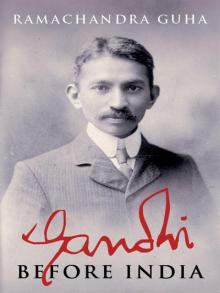 Gandhi Before India
Gandhi Before India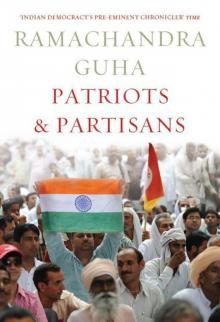 Patriots & Partisans
Patriots & Partisans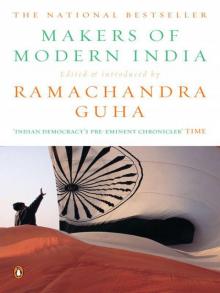 Makers of Modern India
Makers of Modern India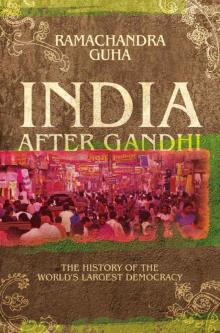 India After Gandhi: The History of the World's Largest Democracy
India After Gandhi: The History of the World's Largest Democracy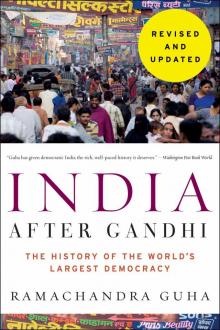 India After Gandhi Revised and Updated Edition
India After Gandhi Revised and Updated Edition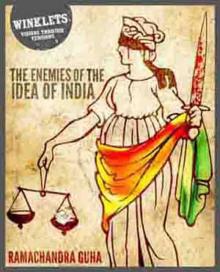 The Enemies of the Idea of India
The Enemies of the Idea of India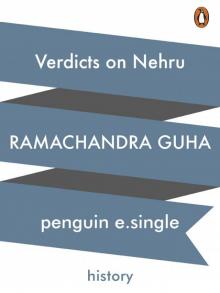 Verdicts on Nehru
Verdicts on Nehru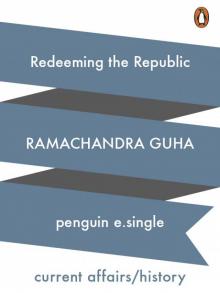 Redeeming the Republic
Redeeming the Republic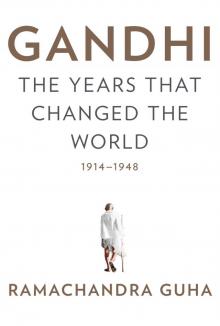 Gandhi
Gandhi The Picador Book of Cricket
The Picador Book of Cricket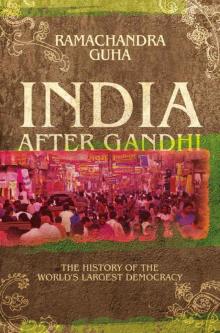 India After Gandhi
India After Gandhi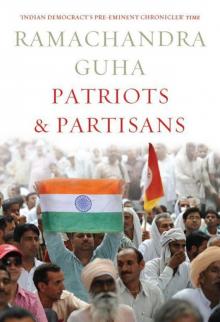 Patriots and Partisans: From Nehru to Hindutva and Beyond
Patriots and Partisans: From Nehru to Hindutva and Beyond